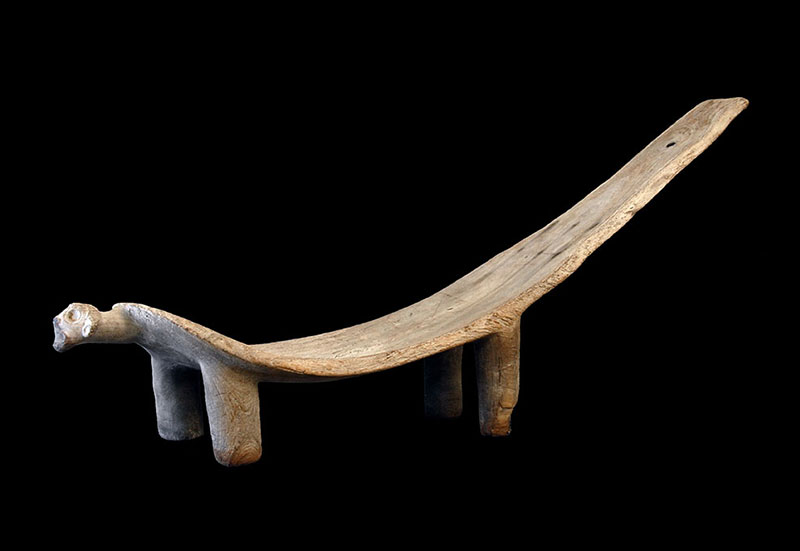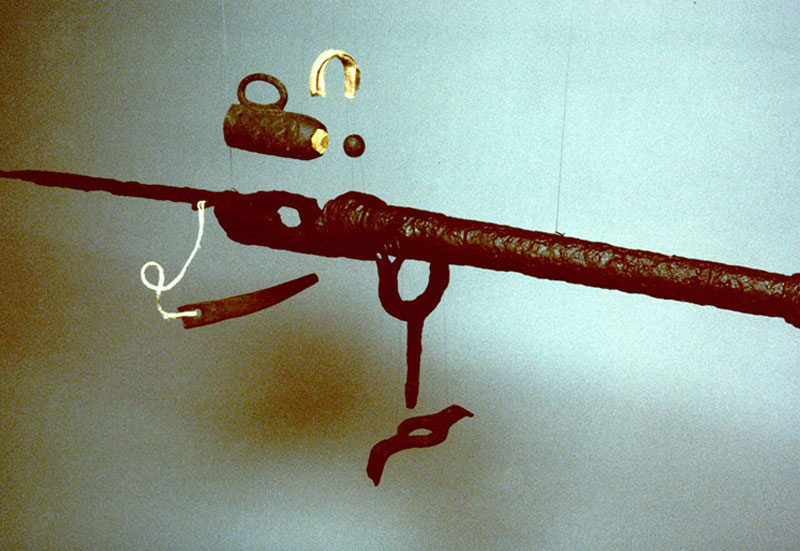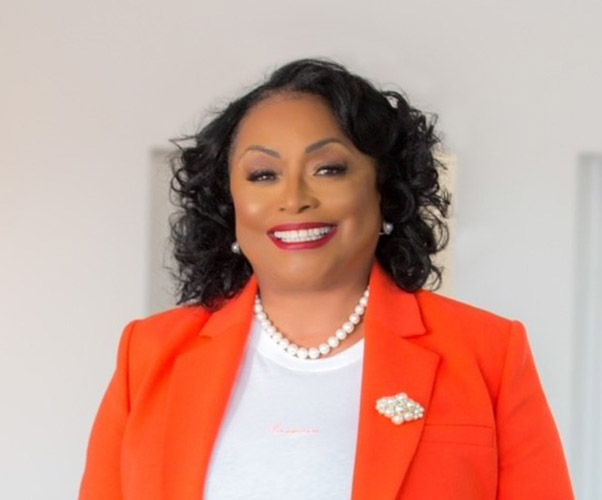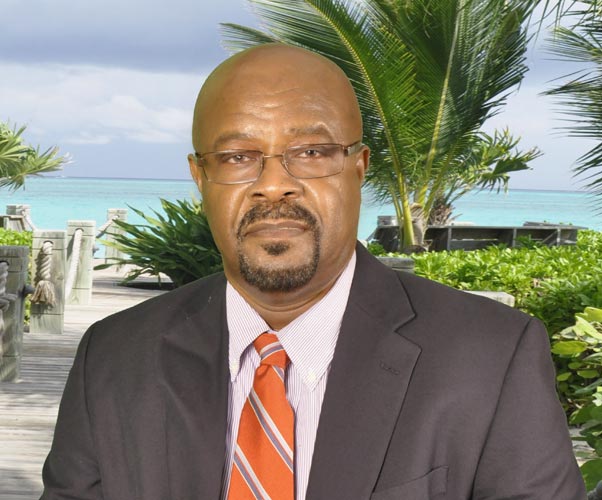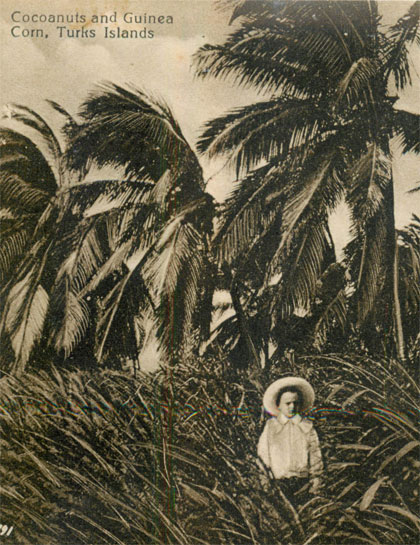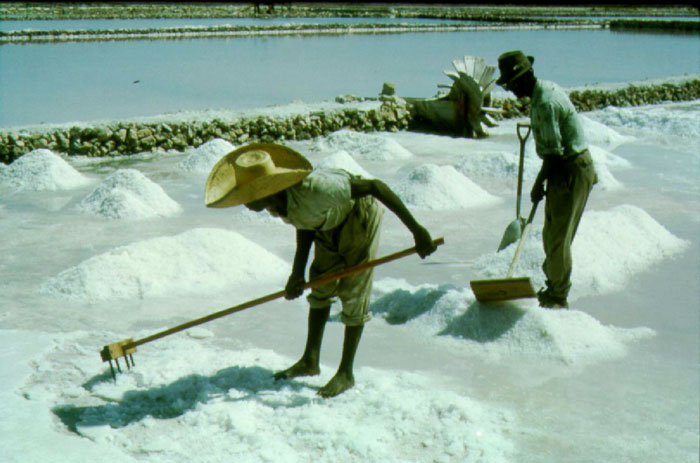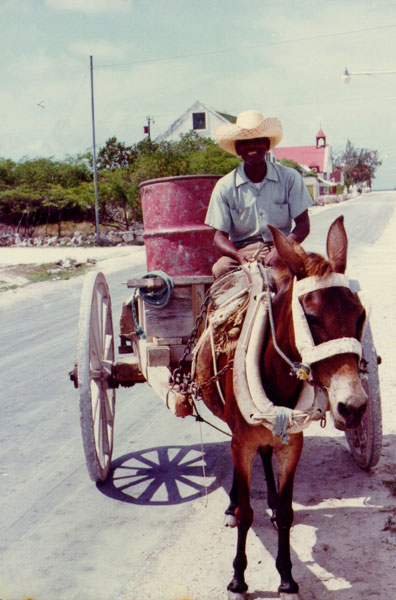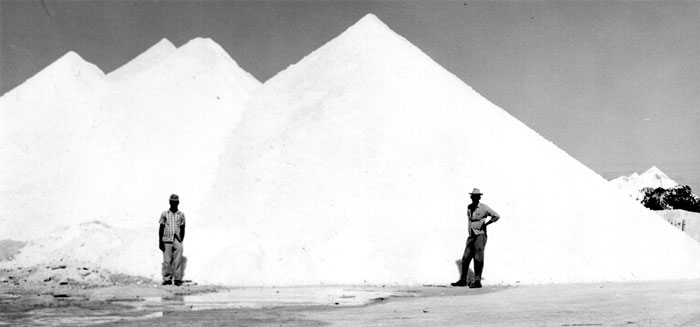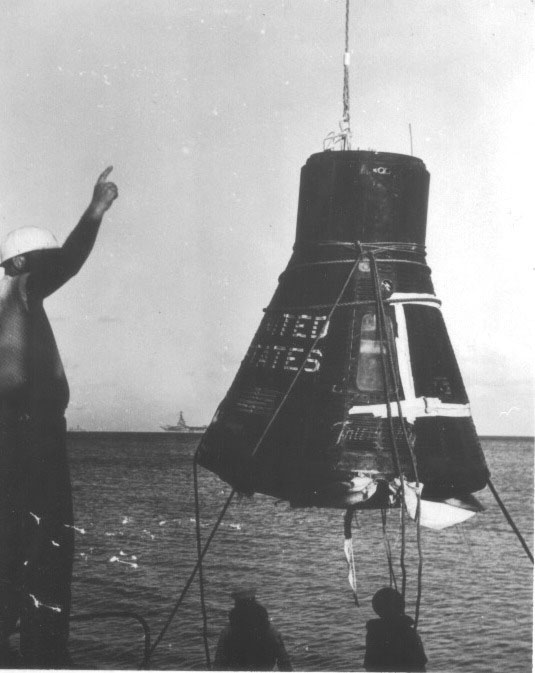Freedom Brings Changes
The approach of emancipation saw unrest in the West Indies. Initially, the slaves were being told not to expect too much to change as emancipation was but the first step.
Even though disturbances on Grand Turk had lead to troops being sent, the day of Emancipation, 1st August 1834, passed quietly. From commonly held folklore it is believed that the Emancipation Act was announced from the balcony of the Oddfellows Lodge at the junction of Market Street and Front Street (plot 66). However, from early photographs there is clearly no balcony on this building well into the 20th century, in fact a photograph taken in the 1950s shows no balcony. Why the discrepancy? It is probably a simple answer – folklore is a vocal tradition, through storytelling the past is told to the new generations, but this is prone to slight and gradual changes.
The plot of land in front of the Oddfellows Lodge was where the salt was deposited while waiting for shipping and where slaves congregated to unload, bag or move the salt to the ships waiting at the Government Wharf. In truth the Oddfellows Lodge would be the ideal location for the Emancipation Act to be read out, and whether it was read from the upstairs window, in front of the building or near to it does not really matter – it matters that the act was read out to the slaves.
Post Emancipation
The British Government paid the slave-owners ₤12 14s 4d for each slave. For example we know that Henshall Stubbs was paid ₤2298 19s 0d in compensation. As this was paid on 4th April 1836 they also included ₤114 12s 4d interest, bringing his total compensation to ₤2413 11s 4d (Public Record Office, NDO 4/11).
However, between 1834 and 1838 little changed for most slaves. An Apprenticeship system was introduced and had three main aims: to act as an easy transition from slavery to freedom, to provide a labour supply to the former slave owners and to assist the slaves in understanding their responsibilities as free people. In the Turks and Caicos Islands the carried out a 4-year apprenticeship with their former masters, a period when they would be prepared for what freedom would bring. During this time they could keep 1/6th of the salt they raked and were provided with clothes and housing by the former owners, with some also receiving wages and other allowances. Henshall Stubbs was the only major salt proprietor on Grand Turk to refuse to enter into voluntary engagements with his apprentices. Special justices were employed to guarantee that the apprenticeship scheme ran smoothly, and would carry out punishments for people not following the new legislation. Even though special magistrates were assigned to oversee the transition it was unlikely that they did so effectively: slaves went untrained and were still abused even though the magistrates were supposed to listen to the complaints of both the former slave owners and former slaves.
On 1st August 1838 the apprenticeship scheme was officially concluded. In the Caicos Islands the former slaves were allowed to work plots of land whilst in the Turks Islands they could now work for shares in the ponds or as employees. If they were employed their wages consisted of food, three suits of clothing annually, medical attention and some money, but this required signing an annual contract which many were unwilling to do, preferring daily or weekly hire for which they were paid cash. This had disadvantages as they had no income in bad periods or when salt wasn’t in season. However, some united and worked their shares in the ponds. Daily pay was in the region of 18 cents to clean the pans, 25 cents to rake and tub the salt and 37 cents to ship salt.
This new-found freedom of work in the salt ponds was short lived. Under the headright system where all British Subjects were legally entitled to a share in the salt ponds emancipation threatened the white salt rakers economic well being. Freed slaves were entitled to their own plots, removing them from the control of their former owners. Most wealthy white salt rakers would have found parity under the Head Right System difficult to accept: A new system was required to fit this changing social order. It was decided to lobby for a change to a leasehold system, which would return the status quo as the former slaves were devoid of capital. The leasehold system was introduced to encourage those with capital to invest in the salt industry but the poor white residents and former slaves complained that it removed their traditional rights to the ponds. To alleviate the worries only 2/3rds of the ponds were given over to a Leasehold system, the rest to be split evenly between those who did not invest in leasehold. However, by 1845 all ponds were converted to leasehold: the former slaves were no better off, still working for the former slave owners but kept on the Island by indenture, working to pay off debts.
The Truck system was employed throughout the Bahamas. This system allowed the employers to pay their workers in material goods rather than money. This was open to abuse and some of the salt pond owners bought the freed slaves salt pond lots by paying with Truck. Governor Cockburn wrote in 1843, “it is in no way to be doubted that the greater part if not the whole of the shares given to the poor and lower classes are again obtained from them by such persons as Mr Stubbs [a major producer] by paying for them with articles of the lowest quality which are charged at the highest price” (Johnson, CO23/115). This fits in with the character of Henshall Stubbs, the largest slave owner in the Turks and Caicos at the time of emancipation, and who appears to have been opposed to the freeing of slaves.
This change effectively meant that the former slaves were now tied into economic “slavery”. They easily ended up in debt, owing the company stores. It wasn’t until the years of World economic slump in the 1920s and 1930s that descendants of the slaves could get employment on ships and get free passage off the Islands.
Changes in Working Practices
Following the abolition of slavery it was clear that the salt pond owners would not be able to meet the wage bills of the newly freed slaves. To this end new production methods were sought. There was little that could be done, but wherever they could remove the need for labour they did so. The labour intensive techniques were replaced with mechanical solutions. The two most notable was the replacement of the hand-operated paddles that moved water around the pans with windmills, and the introduction of donkey carts that were more efficient in moving large amounts of salt. It was also found to be more economic to store the salt near the pan and then move it to the beach when needed rather than taking it immediately to the beach. This effectively meant that there was not enough demand for the labour and that wages could be kept low – most slaves were probably no better off than before. This led to potential unemployment so some former slaves wandered the islands, illegally possessing land and eking out a subsistence living from the land.
The first President of the Turks and Caicos Islands, President Forth, 1848-1854, was given the task of updating the salt industry. He was confronted with an industry that needed more labour and investment, but where the proprietors had little money, especially to hire staff. In the old days more slaves would have been brought in. However, this was no longer an option so Forth suggested that the only “free” labour that could be employed would be convicts, not surprising from a man who had served in Tasmania where convict labour was accepted. This was turned down. If it had been accepted one could easily see the former slaves being laid off for the cheaper convict labour, causing more hardships from the recently emancipated slaves.



